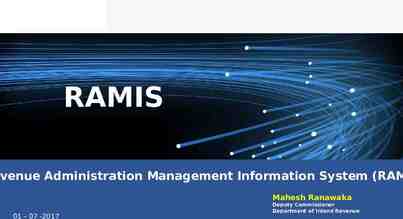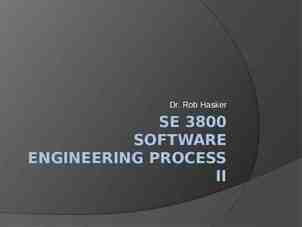Glenn Bergmann, Attorney / Partner Paul Sullivan, Director of
27 Slides179.17 KB

Glenn Bergmann, Attorney / Partner Paul Sullivan, Director of Outreach CACVSO / CalVet Training Riverside, California October 12, 2014 1

Today’s Topics Introduce B&M Why Appeal a Board Decision to the Court Process for Our New MOU Between CACVSO and B&M 2

About Bergmann & Moore B&M is honored to assist CACVSOs and to represent Veterans at the Court Glenn Bergmann: Partner / Attorney. Former VA litigator with VA’s Office of General Counsel. Successfully represented over 5,000 Veterans with disability claim appeals before the Court. Paul Sullivan: Director of Veteran Outreach. Former VBA project manager and former CalVet Deputy Secretary of Communications. 3

About Bergmann & Moore National law firm, founded in 2004, and located in Washington, DC area Practice limited to VA disability claim appeals Managed by former VA attorneys. Several staff are former VA employees and Veterans Successfully represented thousands of Veterans: VA Regional Offices VA Board of Veterans Appeals U.S. Court of Appeals for Veterans Claims U.S. Court of Appeals for the Federal Circuit 4

Why Appeal a Board Decision to the Court A Board decision results in three possible outcomes: Grant Deny Remand Note: A remand by the Board to an RO is not a final decision and cannot be appealed. The advice on the appellate rights pages only applies to issues that were allowed, denied, or dismissed in the “Order” section of the decision. (38 U.S.C. §§ 7104(a), 7107; 38 C.F.R. §§ 20.900 (a)–(b), 20.1405 (d)–(e)) 5

Appellate Rights When the Board issues a decision, the Board also provides two pages of appellate rights updated April 2014: The appellate rights are required under the law to be given to Veterans. If the Board does not mail these two pages of appeal rights to the Veteran, then the Board’s decision is null and void - please see handout. 6

Veteran Has Four Appeal Options CVSOs should discuss four options with the Veteran: Option 1: Motion for reconsideration / vacate Option 2: Motion for revision based on clear and unmistakable error (CUE) Option 3: Reopening claim at local RO Option 4: Appealing Board decision to U.S. Court of Appeals for Veterans Claims (CAVC, or Court) Note: The “Veterans Appeals Improvement and Modernization Act of 2017” is expected to change VA’s claim appeal process in 2019. 7

Option 1: Motion to Reconsider / Vacate Seldom results in changed Board decision Veteran can’t file both motion to Reconsider and an Appeal at the same time Motion to Reconsider must be filed within 120 days Motion to Reconsider should list all issues because the Board will only reconsider those issues specifically noted If the appeal is not filed timely, then the claim dies 8

Option 2: Motion for Revision Based on Clear and Unmistakable Error (CUE) Generally a bad choice due to difficult standard: Specificity requirements. See 38 C.F.R. §20.1403 – In order to prevail, the Veteran must prove: (1) either the facts known at the time were not before the adjudicator or the law then in effect was incorrectly applied; (2) that an error occurred based on the record and the law that existed at the time the decision was made; and (3) had the error not been made, the outcome would have been manifestly different. 9

Option 2 (cont’d) Motion for CUE See Fugo v. Brown, 6 Vet. App. 40, 43 (1993) Clear and unmistakable error is a very specific and rare kind of error; it is an error of fact or of law that compels the conclusion, to which reasonable minds could not differ, that the result would have been manifestly different but for that error. Example where CUE has a chance: rating reduction cases 10

Option 3: Reopen Claim at RO New and material evidence standard Shifts focus to first determining whether evidence is new and material. See 38 CFR §3.156 New evidence means existing evidence not previously submitted to VA. Material evidence means existing evidence that, by itself or when considered with previous evidence of record, relates to an un-established fact necessary to substantiate the claim. Can neither be cumulative nor redundant and must raise a possibility of substantiating the claim. 11

Option 3, cont’d. Reopening Claim at RO Two problems with reopening: Standard to reopen is higher than that for service connection. Effective date of claim is lost. If a claim is reopened, then the effective date becomes the date of the reopened claim. When compared with an appealed claim, a reopened claim may cost Veteran thousands of dollars in retroactive disability compensation. 12

Option 4: Appealing to the Court Appealing to the U.S. Court of Appeals for Veterans Claims (CAVC, or Court). Why appeal to the Court. . . 13

Option 4: Appealing to the Court Court Background From 1862 to 1988, there was no Court. VA enjoyed a “period of splendid isolation” – VA operated free of judicial oversight. For 126 years, the Board of Veterans' Appeals provided VA’s final decision on disability claims. Veterans were denied the rights afforded to other citizens to go to court and challenge similar agency decisions. 14

Court Background After nearly three decades of debate, the Court of Appeals for Veterans Claims was finally created under Article I of the Constitution by the Veterans' Judicial Review Act (VJRA) on November 18, 1988. VJRA eliminated the bar to judicial review and allowed lawyers to represent Veterans, for a reasonable fee, after the claimant's case was decided by the Board. 15

Court Background, cont’d. The Court has national jurisdiction to hear cases denied by the Board. The nine judges (currently only staffed with eight) are appointed by the President and confirmed by the Senate to serve either thirteen or fifteen year appointments. Court information, including Court statistics and biographies of Judges: www.uscourts.cavc.gov 16

Court Considerations, cont’d. There is a significant change when a claim is appealed to the Court: the process becomes adversarial. VA’s Central Office in Washington, DC assigns an appellate litigation attorney from Professional Staff Group VII (PSG-VII or Group VII). VA’s attorneys defend the Board’s decision before the Court, and VA’s attorneys attempt to show that there is a plausible basis for the Board’s decision. 17

Court Considerations, cont’d. Federal judge is first non-VA adjudicator Generally Veteran-friendly environment. 9 judges – many have military/veteran benefits background. Process is generally quick Fairly strict time limits throughout the appeal development process. VA not permitted to drag feet. Present trend - Court usually issues a decision within three months of the case assignment. 18

Court Considerations, cont’d. Attorney representation at the Court is free and (B&M representation) does not replace the POA before VA. Neither the attorney nor the Veteran needs to come to Washington, DC for the Court appeal. Veterans can represent themselves before the Court. Appellate Court’s review is limited to the law and evidence that existed at the time of the Board’s decision. 19

Court Considerations, cont’d. In fiscal year ending September 30, 2016, the Court considered 4,212 cases. Fiscal Year 2016 4,212 Cases Dismissed 495 12% Remanded 898 21% 77% of the cases contained some favorable disposition relative to at least one condition. Affirmed 457 11% Note: The Court issued 495 dismissals 179 for lack of jurisdiction 96 for default 220 dismissed voluntarily Part Reversal or Remand 1,623 39% Reversed 739 18% 20

B&M Court Representation During FY 2016, Bergmann & Moore represented more than 400 Veterans before the Court. B&M represented nearly 10 percent of the Court’s docket that year. B&M had a 96% success rate (remanded or reversed, in whole or in part) 21

Our New CACVSO - B&M MOU for Court Representation MOU signed by CACVSO and B&M on May 16, 2017 B&M represents Veterans pro bono at Court B&M service to CACVSO and CVSO is free Process follows existing national practice B&M has with VFW, VVA, and AMVETS Transparent process where CVSO and Veteran can follow progress and download pleadings on Court’s docket at www.uscourts.cavc.gov 22

Process for B&M Triaging Appeals from the Board to the Court Please see “Process” handout prepared by CACVSO for complete details. Step One: CVSO sends Board Decision to B&M. Step Two: B&M reviews Board Decision and decides if there is an appealable issue. B&M then contacts CVSO and CACVSO and conveys B&M’s recommendation. Step Three: CVSO contacts the Veteran about opportunity for representation at the Court at no cost. The Veteran can then call B&M and start the appeal process – please see draft letter. Step Four: B&M explains the appeal process to the Veteran, including a limited Power of Attorney (POA) for the Court appeal. 23

Process for Appeals from the Board to the Court Step Five: When the Court issues a decision, B&M will contact the Veteran and explain what happened. B&M sends the CVSO and the Veteran a copy of the Court’s decision, the claim file (only to Vet), and a memo that identifies all the errors we identified for subsequent use by the CVSO. B&M files a petition to the Court for our fees to be paid by VA – this is pursuant to the Equal Access to Justice Act (EAJA) – the fees do not come from the Veteran’s award. Once the appeal is concluded, then B&M’s limited Power of Attorney (POA) expires. 24

What to Expect from a Court Joint Motion / Reversal / Remand / Affirmance The Court’s decision or the Joint Motion for Remand (JMR) document gives the CVSO a blueprint on what to do next. It identifies what VA did wrong and what actions VA must undertake to fix the errors. A Court remand or reversal sends the file back to the Board (and the POA returns to the CVSO), where it is placed on the Board’s docket for expedited processing. The effective date of claim is preserved, opening the door to retroactive disability benefits. Note: A Court affirmance can be appealed to the Federal Circuit. 25

Benefits of Our CACVSO – B&M MOU MOU extends the CVSO’s reach up to the Court, and this results in the appeal (effective date) staying alive and can result in additional VA compensation for the Veteran. MOU means that B&M provides the Veteran and the CVSO with a complete memo listing all VA errors B&M identified. The B&M memo is based on a page-by-page review of the Veteran’s claim file. The CVSO is encouraged to submit the memo to VA in furtherance of the appeal (so as to avoid issue exhaustion). VA is then required to respond to each allegation, not just the single item where the Court found / JMR identified VA’s error. 26

Thank You CACVSO and CalVet Questions? 27






